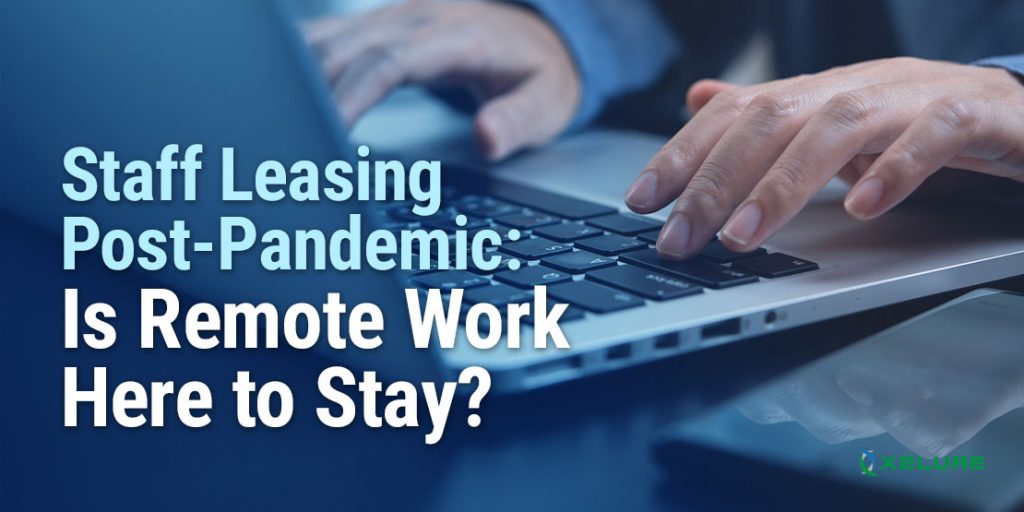The present pandemic has already forced the pace of remote work arrangements and cultures across the globe and industries. Remote work has been here and the pandemic has only accelerated the pace of it’s adoption in all respects. In a 2018 paper the ILO (International Labor Organization) has already been prescient in presenting this as a policy opportunity for states and businesses. The ILO has observed the increased use and productivity gained from digital platforms but calls for hedging against the risks to worker’s engagement and empowerment. The ILO has indicated that reduced working hours, increased productivity, and increased wages appear to be a welcome trend that needs to be embraced. In the same paper, ILO calls for a balance of work and workers’ welfare that can ultimately benefit both the enterprise and the workers.
Telecommuting, remote work? Trends
The language of telecommuting and telework has long been shelved in favor of new discourses such as remote work, distributed work, mobile work, smart working (UK), and work shifting (Canada).
Disadvantages mostly revolve around employee’s missed social interactions, the toll remote work takes on employee’s mental and physical health, the blurring of home and work boundaries, and lack or too much communication. On the company side, security concerns and on-boarding challenges are highlighted.
According to Global Workplace Analytics, employees may save USD 2,500 to USD 4,000 working from home part time. Meanwhile, employers are hinged on cost effectiveness, where an estimated USD11,000 is saved per half time remote worker per year. This is attributable to increased productivity, reduced absenteeism and turnover, lower real estate cost, and better disaster preparedness.
In separate polls in 2019 it was found that 56% of employees have jobs where some of what they do can be done from home, 62% of employees say they could work remotely, and that desks are vacant for 50-60% of the time. In 2018, the estimated growth of the work from home set-up was at 173% since 2005 which was 11% faster than the rest of the workforce. Overall in 2016, Information and Technology, Technical Services, and Finance and Insurance have collectively led the pack in work from home arrangements accounting for 31% of the workforce.


This may signal a foot-in-the door for companies toward shifting gears to remote work in the pandemic and beyond. Essentially, allowing workers to work a stone’s throw away from offices or from homes are not much different from being open to building remote teams abroad. Locations like the Philippines have been ready since before the pandemic with strong infrastructure and government policy to pick-up on this tide.
According to the US Bureau of Labor Statistics in 2016 an estimated 62% of employers offer telecommuting on an ad hoc basis to at least some employees, 42% offer it part time, and 27% offer it full time. Today, 40% more US employers offered remote work schemes than they did five years ago. Larger companies are more likely to offer remote work arrangements to their employees. New England and Mid-Atlantic employers are also more likely to offer remote work options to their employees.
Another important aspect would also be the expected slow down in hiring, as the Global Economy is expected to go into deeper recession, companies do not foresee new hiring seeing as 61% expect their companies to recover in at least six months to a year.
Remote Work Solutions: Examples from Tech Companies
Tech companies are mostly expected to be able to adopt faster to the new remote work set-up. Two companies may be referenced here as guideposts—Yahoo and Twitter.
Yahoo, remote work failure?
In 2013 Yahoo banned remote work, the idea came from a new hire poached by the company from Google—Marissa Myers. Why? It was not a statement against remote work per se but that it was not a good fit for Yahoo back then. She mentioned that while employees are more productive working alone, collaboration has been taking a back seat. This may mean a slow-down in creativity. Collaboration may be achieved better if everyone worked in the same place. Employees reactions?

In 2014 more than a third of employees left. After joining with AOL and being acquired by Verizon into Oath, employees report that their biggest benefit was ‘working from home’. This cautionary tale is less of a comment on remote work than it is on the management and organizational culture. Would this same scenario happen in the pandemic year? We can only guess at this point.

The Google hybrid solution.
Google has actually leveraged on the optimized arrangement of hybrid work arrangements. In the last quarter of 2020, they saw the value of working in the office. While they delayed their return to work plans, they did not give in to the idea of permanently working from home.
They have actually invested in a ‘hub strategy’ where workers may be asked to work in commuting distance from the office.
This would combine working from home, in a hub, or in their office. This offers huge gains in flexibility for both the employers who can reduce their real estate foot print and employees who can reduce or altogether reduce commute time.
Twitter, working from home forever.
Early in May 2020, Jack Dorsey, Twitter CEO became one of the few mavericks in. Forward-thinking statement of allowing employees to work from home–”forever”. This was extended to Square which he also leads. They believe that they are doing what is best for the welfare of their employees. Furthermore, they cite that they wanted to have their employees work where they are “most creative and productive”.

In an adaptive strategy, Twitter has recognized the demand to learn from their initial experiences in remote work and push it as they allow employees to work from home forever.
Office, hybrid, or permanently working from home? Moving to the next normal is seeing a highly transformed workplace and workforce. It’s time for businesses pick up the pace.






